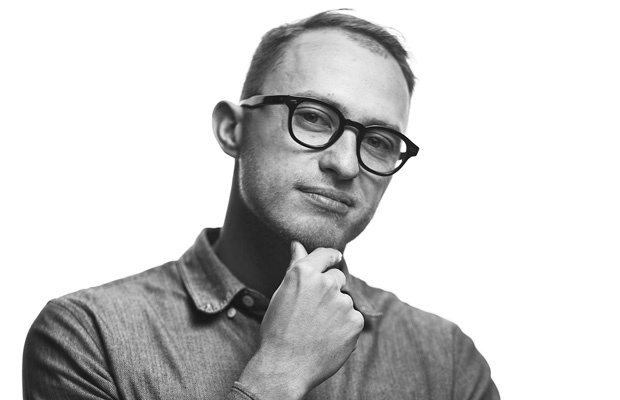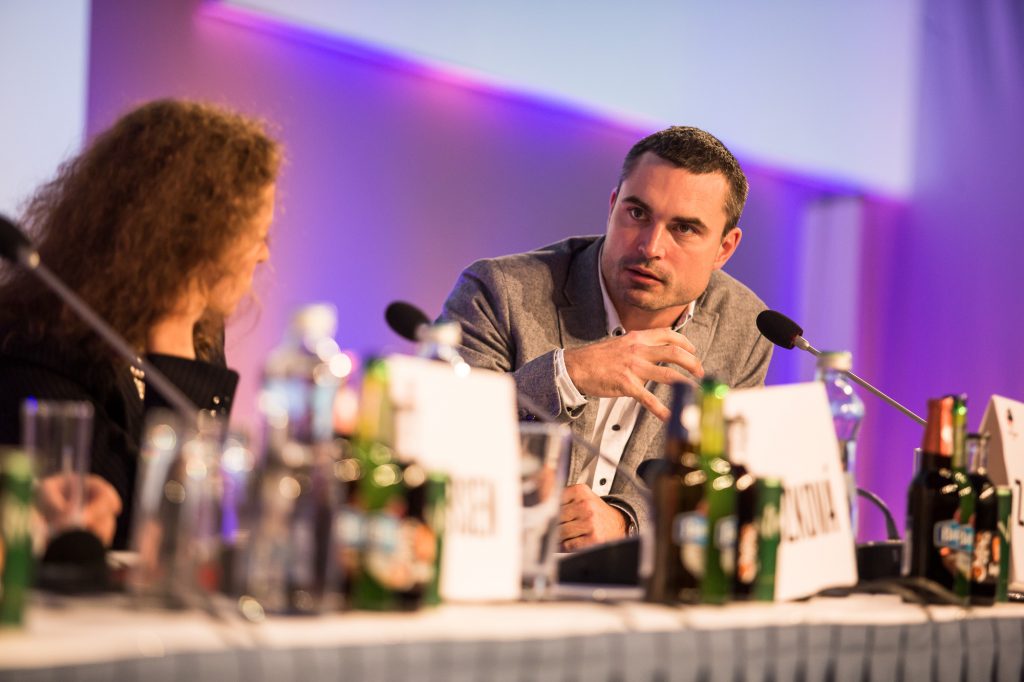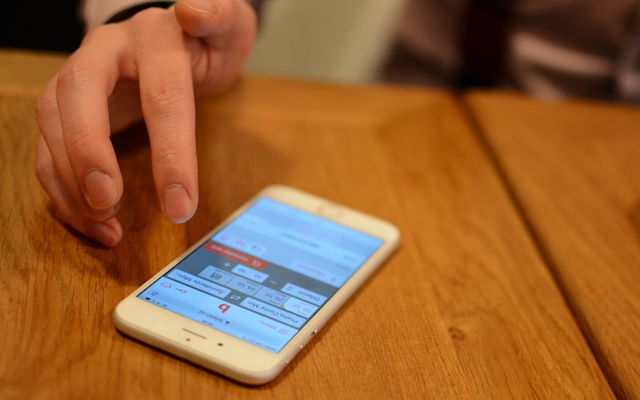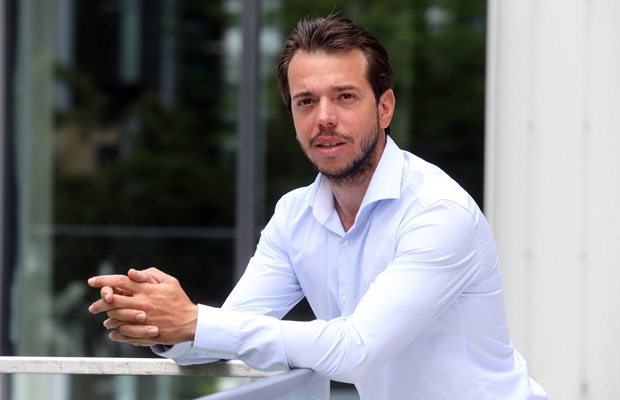All newsPavel Flégl: I am always on board with the client

Sitting down with Pavel Flégl to discuss his job as creative director, his Asian mission to Leo Burnett, his successful campaigns for Heureka and SazkaBet, his dream client and how he motivates his employees.
Pavel Flégl was there at the start of Prague Bistro, in 2007. This agency started in cooperation with McCann Erickson while working on digital communication projects for Vodafone, Poděbradka, Mastercard, etc. In 2012, he headed for an “Asian mission” to Kuala Lumpur where he worked for a branch of Leo Burnett for about a year. He received several international awards for his efforts. After returning to Prague, he took the reigns as Creative Director at Prague Bistro, participating in creating campaigns for brands such as Heureka, SazkaBet, Vodafone, Google UK, Škoda, etc.
In the Czech Republic I lacked benchmarks
In 2006 you co-founded Prague Bistro and you have worked there until now. Just two years ago, you took a short break and left to work for Leo Burnett in Kuala Lumpur. Did you feel the need for change?
It was just a minor reason. Simply, in the Czech Republic I had no benchmark for what it meant to be a creative director. Or at least I could not see it here.
And do you have the comparison today?
Yes. Since I came back, I am much more confident about what I do. It was a ground-breaking moment both in my professional and private life, as well as a great experience. I draw inspiration from it every day.
What did you learned at Leo Burnett?
Most importantly, I learned to understand their philosophy. They attempt to say everything with a humanistic touch. When you consider how many technological devices we have today – smart phones, tablets, smart TVs – this is very important. Today, even a washing machine has a wifi. And the sellers just bombard you with a huge amount of data, which people do not understand. So I think that the key is to pass it to people reasonably – to find some connection and human/relatable story. The most important thing is that the product is the hero – the one who always solves the problem. That is the rhythm to which we work at Bistro.
Who gave you that benchmark for the job of creative director?
Three names: Eric Cruz, Iska Hashim, and Kevin Larken.
Did they have anything in common?
I was amazed by the lightness of their ideas and how naturally they are able to sell them. Thanks to them I learned to prepare presentations and convey information in such a way that the end result makes sense. One slide must lead to another, etc. Not everything can be applied in the Czech market, but the biggest experiences are general truths that work. Then, it simply depends how smartly one can apply them.
So, objectively: What qualities, in your opinion, should a good creative director have?
He should have a vision. He should know how to cooperate with people in the creative departments – with copywriters, art directors, all freelancers, and production. He should be able to motivate them to complete the vision. On one hand, he has to supervise the creative solution, on the other hand, he has to understand the brand – to feel where it goes, what it stands for, to whom it speaks. It is not just: we will have one funny banner and that´s it. I am interested in whether it agrees with the philosophy of the brand and its values. It is a much wider scope and I need to work in these dimensions. And, in the end, you have to take it all and present the work to the client.
Which part of your job do you enjoy the most?
Brainstorming with the top team management just after we get a brief from the client. The moment we try to solve it. It is what I hate the most, as well as enjoy the most. At the very beginning, you have nothing and gradually you start to see the big idea. Things build up move and move fast. I enjoy this part a lot.
You say that your task is to see things in a broad perspective and understand the brand of the client. Can you give some advice how to do it?
Understanding the client is crucial. We don’t want to just make a good advertisement, we want to move with the culture and help solve a problem. To make people interested in campaigns. Not just to make a random billboard. Our aim, is when you see a campaign, you feel like interacting somehow, like expressing yourself. We focus on storytelling and we try to find some human fresh angle in our campaigns.
Give us a specific example.
Right now, we are working on a campaign for Windows Phone. We cannot even think about it without actually unpacking the phone, charging it, and using it actively for a few days. We have to understand not just the product, but also what the customer actually wants what s/he is interested in, and when s/he buys it. It requires us to be in real personal contact with the product/service, and to have a complex user experience. In the end, it is not important whether it is food delivery or a phone. I want to go through the whole process myself. When it is an insurance company, I try calling to their call center to report damage so that I have an idea about their processes and maintaining CID.
I am always on board with the client
How did you manage to win the campaign for Heureka?
It was primarily thanks to a great team, an excellent idea, and the open attitude of the client who was not afraid to go into something like this. In fact, an ideal situation. However, I don’t want to go into details at the moment.
Try to be more general then.
When you get a brief that is written well and you go to the client for a debrief, it is good to have a certain pre-set mind-set on how you will work with the campaign. To know the tone of voice and the target group. It is crucial to be on board with the client, i.e. to specify the vision. Not to be afraid to ask. I know that the client likes it when you ask questions. He feels you are interested in it. So in my opinion, it is essential to establish some personal contact. You will see immediately whether it works or not.
What was Heureka´s brief?
Primarily, they wanted to create a TV campaign and say that now people can even shop on Heureka, to pre-set the basket function.
This was the assignment, followed by brainstorming with the team, and the idea immersed. What if your idea is bigger than what the clients wants?
This is where personal communication with the client is essential. At the debrief, we asked questions whether they really wanted just TV, or whether to make a long-term concept which would have “long legs” and which could be spread to all media. It turned out that they wanted much more than just “ordinary TV”.
You got the tender. The campaign was done. In your opinion: Was is successful?
100%
What does it mean – a successful campaign?
It depends what goals you expect from the campaign. With Heureka, it significantly raised its brand awareness, but that was just the first part. It is also important that the customer understands the message. When we tested the advertising spots, people said it was clever and funny. Yes, but later when we asked what they took from it and what brand it was, they all said Heureka. And “what is Heureka?” At that moment they all thought we were making fun of them and they all said: Well, the place where I can compare and buy goods. At that moment, we knew that the campaign was well balanced: compare – buy.
We are talking about Heureka, but you have recently won tender for SazkaBet and Aquila. Does the beginning of your process differ in anything depending on what kind of client it is?
I think that the beginning of the campaign is almost always the same. The important thing is how the client writes the brief. I don’t want to go into some general assessment, but I rarely see a well written brief in the Czech Republic. Anyway, what really helps is if there is some personal truth. If the service is extraordinary and helps solve one´s specific problem. Then you have a stepping stone and you can start to build on that. With Heureka, we realized that it solves problems with online shopping for the customer – it saves time. It is actually a life hack. You compare goods, you choose it and directly buy it. Done. Next, for the campaign, we went on to solving issues like how to drill the right way, how to put the baby to sleep quickly, and how to park the car without any scratch. Suddenly, you have all the creativity, which be multiplied.
And what about SazkaBet?
The goal was to create a communication campaign based on a celebrity. Here is Jarda Jágr. We put him in the role of a coach who was looking for new players and he gave them advice on what to do. We prepared image spots, a remarketing strategy, but also the redesign of registration pages. The efficiency is measured here. Thanks to the campaign, the number of new registered players of SazkaBet has risen several times. In this instance, it is a lot about numbers. With Heureka, it was more about the brand.
Brand awareness cannot be measured?
Of course it can. In the long term. When campaign has just finished and you ask the targeted sample about the campaign, after a month or two, they should be able to distinguish the campaign and its key features.
I do yoga, assemble motorcycles and I like surfing
How do you clear your mind?
I used to box. Now its mostly running and yoga. It is genial. In the morning, it makes you ready for the whole day and in the evening, it helps you “take out the garbage”.
What do you expect from the people you bring to Prague Bistro?
Apart from being perfect professionals, it is very important for me that they live their own lives. When you just work, you are so blindfolded. There are many people who are good with Photoshop. But I am interested in those who can also compose music, who spend weekends in the mountains biking: people who use their holidays to prepare installations for Designblok. Only then I know that they will not burn out or repeat their ideas. It is also important that they fit into the team spirit. We need to be on the same wavelength.
How do you motivate your employees?
Recently we sent a select group people to a retouching workshop at the Light Garden Academy. It is Stanislav Petera’s studio. Within a week, our juniors became seniors, and it is just great to see their enthusiasm and fervor to prove it. I see this as a good step right now.
And what kind of motivation pill do you take? We hear a lot about Bistro.
(laugh) You know, until recently we were just Prague Bistro. Right now, the strongest motivation for me is that we are in a new place with the media agency AdExpres which owns us, and in turn, Rockaway owns. With this, we are connected to Mobile Internet and the production company &Flux. Thanks to them, we have regular access to a studio and we all make one big creative HUB. We can do many things in-house. What I like very much and what drives me forward is the possibility to synergically use individual strengths. When AdExpres gets a tender, they tap into our creative people. When Bistro gets a tender, we borrow planners from AdExpres. Collaboration. Currently, it works very well and we are curious to see how far it will take us.
Tell me one last thing: Who is your dream client?
Nike. It would be a pleasure to work with their team.



